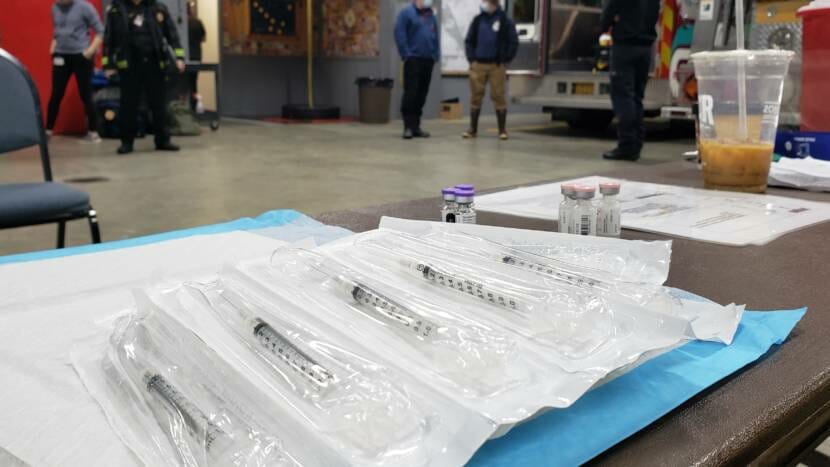
Firefighters and ambulance crews in Juneau are moving ahead with their COVID-19 vaccinations after a Bartlett Regional Hospital worker made national headlines on Wednesday for being the first, and so far only, person in the United States to have a severe reaction to the vaccine that rolled out this week.
Inside the apparatus bay at Capital City Fire/Rescue’s downtown station on Thursday, about a quarter of Juneau’s career firefighters and ambulance crews are assembling to get their first dose of Pfizer’s COVID-19 vaccine.
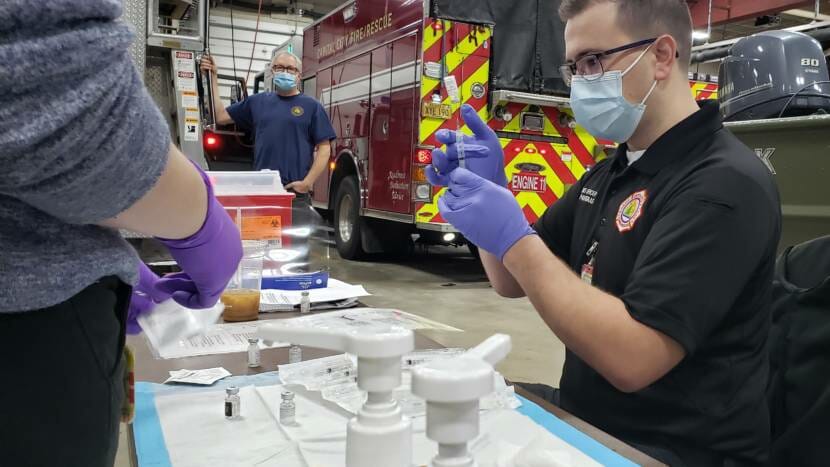
Most of them are finishing up a 24-hour shift and headed into 48 hours of downtime. That’s by design. It’s a precaution in case they need some recovery time from some of the shot’s effects.
The department’s EMS Officer Andrew Pantiskas is running the pop-up clinic. He calls them together.
“This is history,” Pantiskas tells them. “… I’m not going to lie to you guys — there have been severe reactions. We all know how to deal with a severe reaction. Paul’s on today, Paul’s going to take point on it.
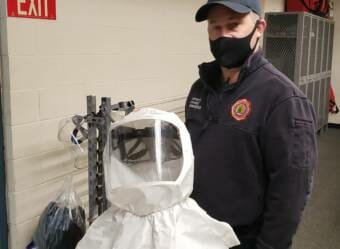
Firefighter/paramedic Paul Hammerquist pipes up and waves his hand.
“So if you don’t want Paul to take care of you, don’t get a vaccine today,” Pantiskas jokes.
Paramedic Lily Kincaid says she is a little nervous about dosing her coworkers.
“When I was doing flu shots in October, I did them every day for month, and it was no big deal. But when there’s a big group of people staring at you — this is history — it’s a little scary,” she says with a nervous laugh.
Firefighter/EMT Mark Fuette is up.
“All right, you’re gonna have a little prick on three,” she tells him. “Ready? One, two, three.”
“Is there blood yet?” Fuette asks.
“So much blood, everywhere,” Kincaid deadpans.
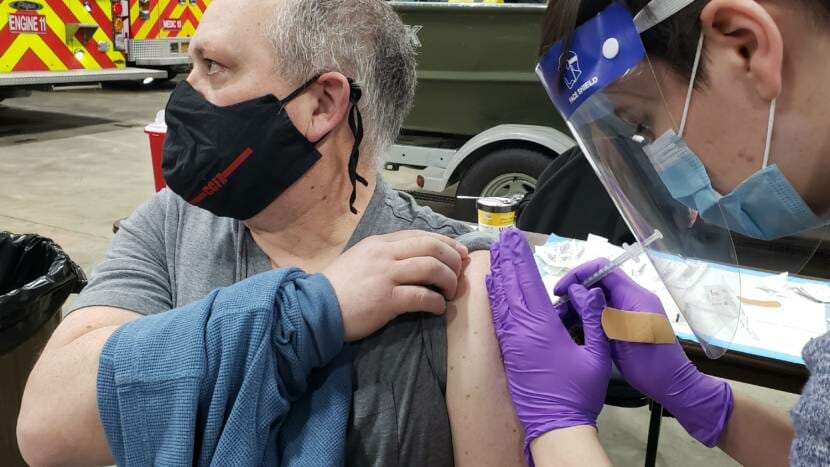
As she wipes down Capt. Trevor Richards’ arm with alcohol, Richards says the hospital worker’s severe reaction on Tuesday isn’t weighing on him.
“It’s not a concern because I know it could happen with any medication,” Richard says. “But we have the … medications to treat that if there was an allergic reaction or anaphylactic reaction.”
The ambulances in the bay are equipped with epinephrine, corticosteroids, Benedryl, oxygen — everything they’d need to treat a bad reaction.
The hospital reported one more bad reaction on Wednesday, though his case was not severe and resolved within an hour.
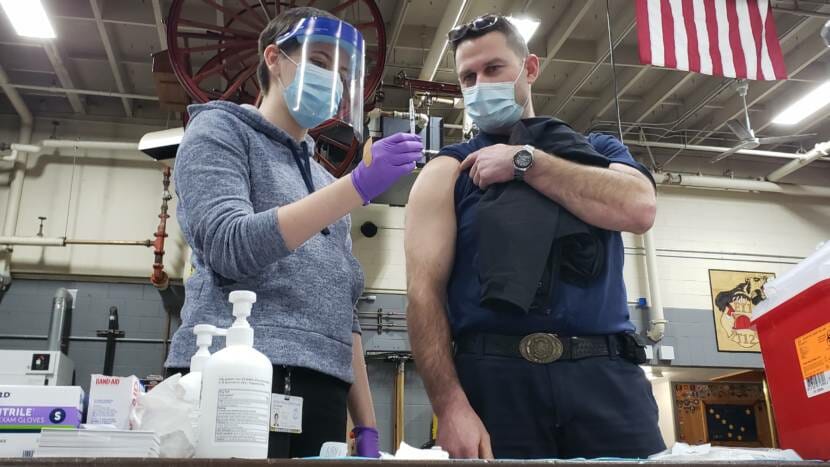
Pantiskas says most, but not everyone on staff signed up to get vaccinated. He says some are waiting for more information to shake out, some just don’t get vaccinated in general. But the case at the hospital hasn’t changed attitudes much.
“Not really,” he says. “We all know that there could be side effects and risks. And as firefighters as a whole, we’re calculated risk takers. We know that it’s an excellent vaccine. It’s been vetted. We know there’s risks. But overall, the good outweighs the bad for most of us.”

Dr. Anne Zink, Alaska’s chief medical officer, said Wednesday that treating bad reactions is mundane for a lot of medical professionals.
“Anaphylaxis and allergic reactions are kind of bread and butter for EMS, for emergency medicine, for family medicine,” Zink said. “This is what we do all day long to all sorts of other reactions. And so, this is kind of well within the skill set of Alaska health care providers to help manage this.”
The vaccinations wrap up at the fire station in under an hour.
“It’s all good so far, no one’s had a reaction in the past 15, 20 minutes,” Pantiskas says. “So we’re going to clean this up and do it again tomorrow.”
The vaccine supply remains limited and reserved for certain frontline workers and long-term care facility residents. The state’s COVID-19 Vaccine Task Force met Thursday to take public comment about health care workers’ inclusion in Phase 1a of vaccine distribution.
